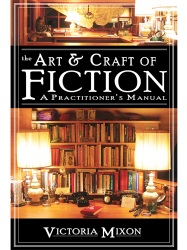In my completed novel (currently on query to an agent), I have a scene where two people have flat tires, one the protagonist and one a girl he meets who becomes his girlfriend. I don’t say in the scene that both flats were purposeful. The girl did her own flat to manipulate the protag into being her hero to get a chance to meet him. The protag’s flat was done by an antagonist to disrupt his life. But I never tell the reader both of these were purposeful, hoping they’ll get it. If, in a later scene, after the protag finds out his girlfriend was a fraud, I insert [Ronny thought back to how me met Sarah, to her flat tire, and wondered whether it was a ruse to inject herself into his life.] that would be exposition. Since my beta readers didn’t get it, maybe I need to add that.—David A. Todd in the comments on 6 Things I Learned from Dashiell Hammett
Never apologize, never explain.
In your situation, David, explaining Ronny’s thoughts about Sarah removes the tension from their relationship and ends the reader’s investment in it. That’s the point at which the reader closes the book and walks away. So you’d only use such an explanation on your very last page. However, Ronny’s behavior as he begins to suspect that Sarah machinated their meeting is wonderful, rich material to explore in illuminating what he does about his situation when he finds out he’s gotten involved with someone other than the woman he thought he was getting involved with.
That’s your story.
I do hear this kind of thing a lot about beta readers, that they don’t understand what’s going on and therefore recommend the writer explain it. And there’s a very good reason for that:
Beta readers do not have the same motivation to read that real readers do
Real readers read out of curiosity: What’s happening? Who are these characters? Why are they going where they’re going? What are they going to do about it when they get there? Every single thing a writer puts on the page is intended to make the reader just so darn intrigued they can’t help turning to the next page.
It’s all about the reader’s experience.
Beta readers, on the other hand, read out of a sense of duty. Either they’re reading your manuscript because they’re a friend or loved one and want to do you a kindness—lend you whatever advice they can—or because they’re a critique partner and need to give something for what they hope to get in return.
It’s all about the writer’s experience.
The problem with beta readers is that, unless they’re professional editors, they don’t actually know any more about the difference between a reader’s experience and a writer’s experience than you do. Which means they can’t guide your education in your craft, only share it.
Beware of leaning on your beta readers to tell you where you need explanation. I have never yet seen a situation in which they were right.
Lean on beta readers for companionship, motivation to get the work done, sympathy when the work goes bad on you. They are absolutely terrific people to have around whenever a writer needs a friend.
But lean on professionals for writing advice.
“The freshest and
most relevant advice
you’ll find.”
—Helen Gallagher,
Seattle P-I
The Art & Craft of Story


